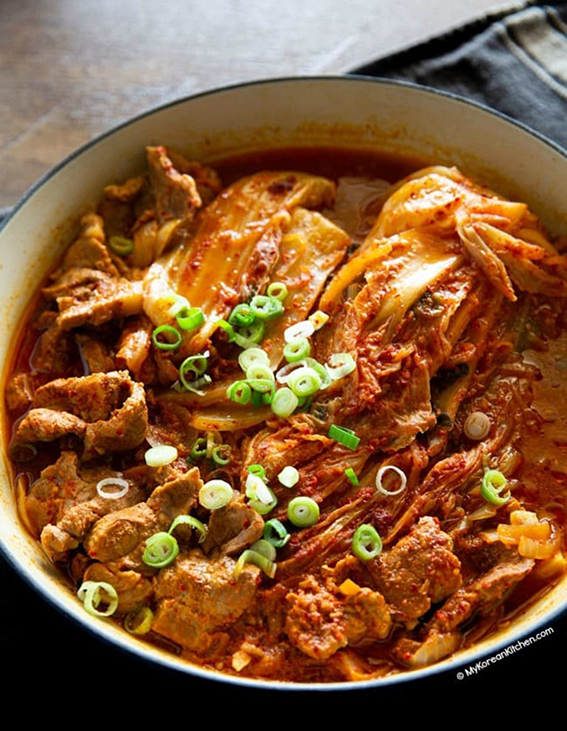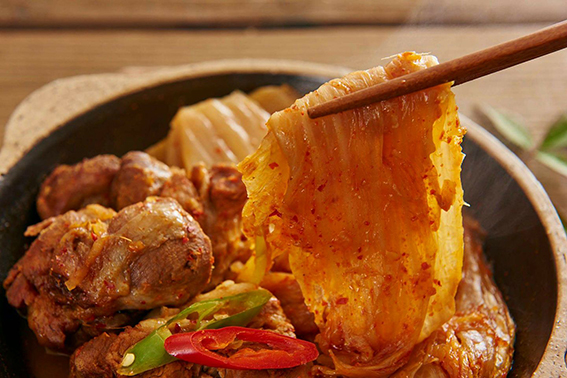Braised Kimchi with Pork Belly
By Joe Wabe.
If you are a kimchi jjigae (김치찌개) enthusiast, you are definitely going to be swept off your feet with this recipe. I think of kimchi-jjim (김치찜) as the “ultimate” version of the stew but with distinct variations: less liquid, sweeter, and with more elaborated flavors. When it is well made, the kimchi and pork with their buttery texture will melt in your mouth, leaving you dazzled as if sunshine had just flooded your soul.
The term jjim (찜) originally referred to dishes made in a big steamer, but the method has changed over the years, and in contemporary Korean cuisine, other techniques such as boiling or using a pressure cooker have superseded the old ways, providing a new meaning to jjim for dishes that resemble steaming in appearance. Now, as long as the process of reducing the broth to a thick flavory sauce is completed, it is good enough to be placed into this “jjim” category.
Among some of the most popular variations of jjim are galbi-jjim (갈비찜), agu-jjim (아구찜), tteokbokki (떡볶이), and jjimdak (찜닭), to mention a few. Two of their common denominators are sweetness and tenderness – traits that make this recipe flawless for this (very cold) winter.

Ingredients
(Serves 4)
400 grams of pork belly
400 grams of aged kimchi
1 tablespoon of rice wine
½ cup of red pepper flakes
2 tablespoons of sesame oil
2 tablespoons of soy sauce
1 tablespoon of anchovy stock
2 tablespoons of cooking syrup (or brown sugar)
1 tablespoon of sesame seeds
1 tablespoon of minced garlic
1 green onion (sliced)
1 medium onion (sliced)
3 shiitake mushrooms
2 cups of water
PREPARATION
Before placing the meat and kimchi in a pot, prepare the paste by adding the following to a small container and mixing well into a thick paste: red pepper flakes, soy sauce, sesame oil, garlic, sesame seeds, anchovy stock, and syrup. You can help form the desired texture by adding a little bit of water if needed.
In a wide pan with a lid, place the pork first, pour the rice wine over it, and then cover it with kimchi, onions, and mushrooms.
Cover the preparation in the pan with the paste and add water.
Simmer at low heat for about 50 minutes. Do not stir while it is cooking but with a ladle gently scoop the liquid from bottom to top. This will allow the distribution of the sauce through the process.
Add the green onions 10 minutes before it is done and – voilà! – soon you will have the perfect kimchi jjim.
The Author
Joe Wabe is a Gwangju expat who has been contributing to the GIC and the Gwangju News for more than ten years with his work in photography and writing.







